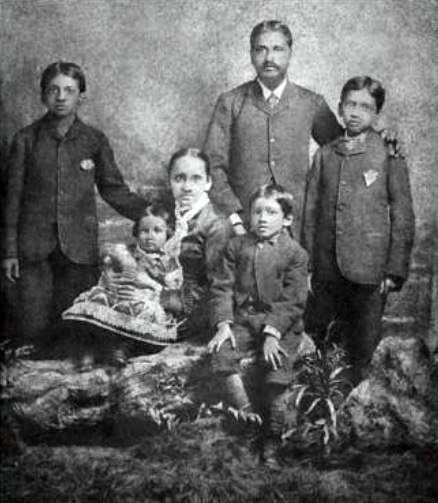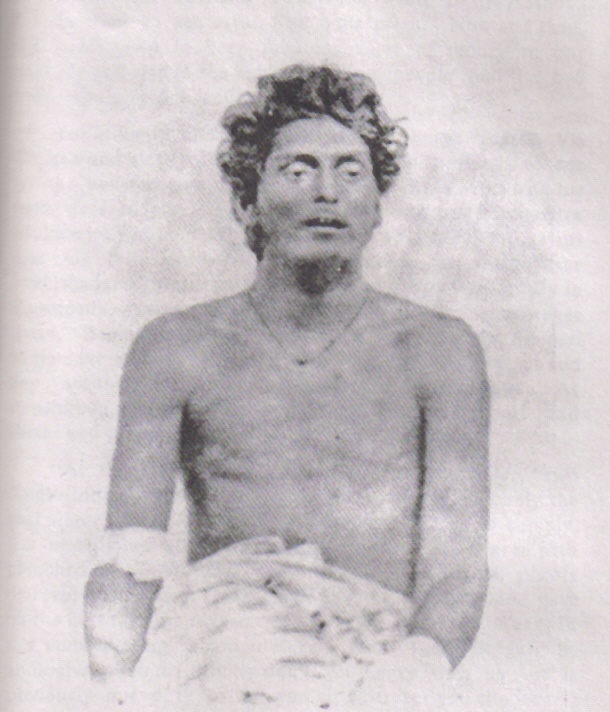|
National Council Of Education
The National Council of Education - Bengal (or NCE - Bengal) was an organisation founded by Satish Chandra Mukherjee and other Indian nationalists in Bengal in 1906 to promote science and technology as part of a '' swadeshi'' industrialisation movement. It established the Bengal National College and Bengal Technical Institute which would later merge to form Jadavpur University. Institutions which were functioning under the council were considered to be hotbeds of swadeshi activities and the government banned nationalistic activities such as the singing of patriotic songs. Background University of Calcutta, one of the three universities in modern India,Other two being Bombay (now Mumbai) and Madras University was set up by the British in Calcutta in 1861 as a means of spreading western philosophical thought among the elites in India. Towards the end of the 19th century, a strong nationalist movement and identity arose within the Indian subcontinent, which was particularly promin ... [...More Info...] [...Related Items...] OR: [Wikipedia] [Google] [Baidu] |
Satish Chandra Mukherjee
Satish Chandra Mukherjee (5 June 1865 – 18 April 1948) was a pioneer in establishing a system of national education in India, along with Sri Aurobindo. The positivist background Satish Chandra was born at Banipur in Hooghly district of present-day West Bengal. His father, Krishnanath Mukherjee,Sengupta, Subodh Chandra and Bose, Anjali (editors), (1976), ''Samsad Bangali Charitabhidhan'' (Biographical dictionary)'', , p 536 had been a childhood friend and classmate of Justice Dvarkanath Mitra, who appointed him as a translator of official documents in the Calcutta High Court. Mitra was a leading believer in the Religion of Humanity as founded by the Positivist Auguste Comte. Adept of this faith, an atheist servant of Man and of society, Krishnanath impressed this ideology on his sons, Tinkori and Satish. Bankim Chandra Chattopadhyay himself was not only one of the first in India to write on Comte and his philosophy but, also, he had zealous Positivist friends like Yogend ... [...More Info...] [...Related Items...] OR: [Wikipedia] [Google] [Baidu] |
Aurobindo Ghosh
Sri Aurobindo (born Aurobindo Ghose; 15 August 1872 – 5 December 1950) was an Indian philosopher, yogi, maharishi, poet, and Indian nationalist. He was also a journalist, editing newspapers such as ''Vande Mataram''. He joined the Indian movement for independence from British colonial rule, until 1910 was one of its influential leaders, and then became a spiritual reformer, introducing his visions on human progress and spiritual evolution. Aurobindo studied for the Indian Civil Service at King's College, Cambridge, England. After returning to India he took up various civil service works under the Maharaja of the Princely state of Baroda and became increasingly involved in nationalist politics in the Indian National Congress and the nascent revolutionary movement in Bengal with the Anushilan Samiti. He was arrested in the aftermath of a number of bombings linked to his organization in a public trial where he faced charges of treason for Alipore Conspiracy. Howeve ... [...More Info...] [...Related Items...] OR: [Wikipedia] [Google] [Baidu] |
Bengal Presidency
The Bengal Presidency, officially the Presidency of Fort William and later Bengal Province, was a subdivision of the British Empire in India. At the height of its territorial jurisdiction, it covered large parts of what is now South Asia and Southeast Asia. Bengal proper covered the ethno-linguistic region of Bengal (present-day Bangladesh and the Indian state of West Bengal). Calcutta, the city which grew around Fort William, was the capital of the Bengal Presidency. For many years, the Governor of Bengal was concurrently the Viceroy of India and Calcutta was the de facto capital of India until 1911. The Bengal Presidency emerged from trading posts established in Mughal Bengal during the reign of Emperor Jahangir in 1612. The East India Company (HEIC), a British monopoly with a Royal Charter, competed with other European companies to gain influence in Bengal. After the decisive overthrow of the Nawab of Bengal in 1757 and the Battle of Buxar in 1764, the HEIC expan ... [...More Info...] [...Related Items...] OR: [Wikipedia] [Google] [Baidu] |
Education In India
Education in India is primarily managed by state-run public education system, which fall under the command of the government at three levels: central, state and local. Under various articles of the Indian Constitution and the Right of Children to Free and Compulsory Education Act, 2009, free and compulsory education is provided as a fundamental right to children aged 6 to 14. The approximate ratio of public schools to private schools in India is 7:5. Education system Up until 1976, education policies and implementation were determined legally by each of India's constitutional states. The 42nd amendment to the constitution in 1976 made education a 'concurrent subject'. From this point on the central and state governments shared formal responsibility for funding and administration of education. In a country as large as India, now with 28 states and eight union territories, this means that the potential for variations between states in the policies, plans, programs and ini ... [...More Info...] [...Related Items...] OR: [Wikipedia] [Google] [Baidu] |
Indian Independence Movement
The Indian independence movement was a series of historic events with the ultimate aim of ending British Raj, British rule in India. It lasted from 1857 to 1947. The first nationalistic revolutionary movement for Indian independence emerged from Bengal. It later took root in the newly formed Indian National Congress with prominent moderate leaders seeking the right to appear for Indian Civil Service (British India), Indian Civil Service examinations in British India, as well as more economic rights for natives. The first half of the 20th century saw a more radical approach towards self-rule by the Lal Bal Pal, Lal Bal Pal triumvirate, Aurobindo Ghosh and V. O. Chidambaram Pillai. The final stages of the independence struggle from the 1920s was characterized by Congress' adoption of Mahatma Gandhi's policy of non-violence and Salt March, civil disobedience. Intellectuals such as Rabindranath Tagore, Subramania Bharati, and Bankim Chandra Chattopadhyay spread patriotic awarenes ... [...More Info...] [...Related Items...] OR: [Wikipedia] [Google] [Baidu] |
Anushilan Samiti
Anushilan Samiti ( bn, অনুশীলন সমিতি, , bodybuilding society) was an Indian fitness club, which was actually used as an underground society for anti-British revolutionaries. In the first quarter of the 20th century it supported revolutionary violence as the means for ending British rule in India. The organisation arose from a conglomeration of local youth groups and gyms (akhara) in Bengal in 1902. It had two prominent, somewhat independent, arms in East and West Bengal, Dhaka Anushilan Samiti (centred in Dhaka), and the Jugantar group (centred in Calcutta). From its foundation to its dissolution during the 1930s, the Samiti challenged British rule in India by engaging in militant nationalism, including bombings, assassinations, and politically motivated violence. The Samiti collaborated with other revolutionary organisations in India and abroad. It was led by the nationalists Aurobindo Ghosh and his brother Barindra Ghosh, influenced by philosophies ... [...More Info...] [...Related Items...] OR: [Wikipedia] [Google] [Baidu] |
Bande Mataram
''Vande Mataram'' (Sanskrit: वन्दे मातरम् IAST: , also spelt ''Bande Mataram''; বন্দে মাতরম্, ''Bônde Mātôrôm''; ) is a poem written in sanskritised Bengali by Bankim Chandra Chatterjee in the 1870s. The first two verses of the poem were adopted as the National Song of India in October 1937 by the Congress. The poem was first published in 1882 as part of Chatterjee's Bengali novel ''Anandmath''. It is an ode to the motherland, personified as the "mother goddess" is later verses, of the people. This initially referred to Bengal, with the "mother" figure therefore being Banga Mata (Mother Bengal), though the text does not mention this explicitly. Indian nationalist and philosopher Sri Aurobindo referred ''Vande Mataram'' as the "national Anthem of Bengal". Nonetheless, the poem played a vital role in the Indian independence movement. It first gained political significance when it was recited by Rabindranath Tagore at Congress i ... [...More Info...] [...Related Items...] OR: [Wikipedia] [Google] [Baidu] |
Jugantar
Jugantar or Yugantar ( bn, যুগান্তর ''Jugantor''; lit. ''New Era'' or ''Transition of an Epoch'') was one of the two main secret revolutionary trends operating in Bengal for Indian independence. This association, like Anushilan Samiti, started in the guise of suburban fitness club. Several Jugantar members were arrested, hanged, or deported for life to the Cellular Jail in Andaman and many of them joined the Communist Consolidation in the Cellular Jail. Notable members * Abinash Chandra Bhattacharya (1882-1962) * Basanta Kumar Biswas (1895-1915) * Khudiram Bose * Satyendranath Bosu (1882-1908) * Prafulla Chaki * Ambika Chakrobarty (1891-1962) * Amarendra Chatterjee (1880-1957) * Taraknath Das (1884-1958) * Tarakeswar Dastidar * Bhupendra Kumar Datta (1894-1979) * Kanailal Dutta (1888-1908) * Ullaskar Dutta * Bipin Behari Ganguli (1887-1954) * Santi Ghose (1916-1989) * Surendra Mohan Ghose alias Madhu Ghosh (1893-1976) * Barin Ghosh * Ganesh Gho ... [...More Info...] [...Related Items...] OR: [Wikipedia] [Google] [Baidu] |
Rashbihari Ghosh
Sir Rashbehari Ghosh (23 December 184528 February 1921) was an Indian politician, lawyer, social worker and philanthropist. Early life Rashbehari Ghosh was born on 23 December 1845 at Torkona village in Khandaghosh area in Purba Bardhaman district in Bengal Presidency. He attended Burdwan Raj Collegiate School and Presidency College, Kolkata. He obtained a first class in the MA examination in English. In 1871, he passed with honours the Law examination and was awarded the degree of Doctor of Laws in 1884. Political career Ghosh became a member of the Indian National Congress and leaned towards the moderate wing. He had deep faith in progress but was opposed to radicalism in any form. He served as the President of the Congress for two terms. First in the 1907 Surat Session, succeeding Dadabhai Naoroji, after which the Congress split into Moderates and Extremists, and then the year after in Madras, 1908. Ghosh was a member of the Bengal Legislative Council (1891–94, 1906� ... [...More Info...] [...Related Items...] OR: [Wikipedia] [Google] [Baidu] |
Brajendra Kishore Roychowdhury
Brajendra Kishore Roy Chowdhury (1874 AD - 1957 AD; Bengali Year: 1281-1364 (1281-1364 Bengali Year http://www.thedailystar.net/gouripur-house-needs-urgent-attention-35277)) was a patron of Indian classical music and national education of the Indian national movement. Background He was the zamindar of Gouripur, Bangladesh, Gouripur in Mymensingh district, Mymensingh, Bengal. His son was Pandit Birendra Kishore Roy Chaudhuri, the eminent sitar player, a founder of the music department of Rabindra Bharati University, Calcutta and author of ''Indian Music and Mia Tansen''. Work He was one of the principal patrons of the National Council of Education that later became Jadavpur University, Calcutta. He was a member of the Floud Commission in 1939. Writings * Marxism and the Indian Ideal (1941) See also * Dawn (Bengali educational society) * National Council of Education * Jadavpur University References Indian male writers Bengali writers 1874 births 1957 deaths {{india-b ... [...More Info...] [...Related Items...] OR: [Wikipedia] [Google] [Baidu] |
Subodh Chandra Mullick
Subodh Chandra Basu Mallik (9 February 1879 – 14 November 1920), commonly known as ''Raja'' Subodh Mallik, was a Bengali Indian industrialist, philanthropist and nationalist. Mallik is noted as a nationalist intellectual who was one of the co-founders of the Bengal National College, of which he was the principal financial supporter. He was close to Aurobindo Ghosh and financed the latter's nationalist publications including ''Bande Mataram''. Mallik was born in Pataldanga suburb of Calcutta to Prabodh Chandra Basu Mallik. He graduated from St. Xaviers College Calcutta and Presidency College Calcutta before enrolling in fine arts at Trinity College, Cambridge in 1900. He returned from England before completing his university studies, and immediately delved into the nationalist movement. His palatial house in what was then Wellington square in Calcutta became a major hub of political activity. In 1906, Mallik was among a group of leading luminaries of Bengal who founded th ... [...More Info...] [...Related Items...] OR: [Wikipedia] [Google] [Baidu] |






